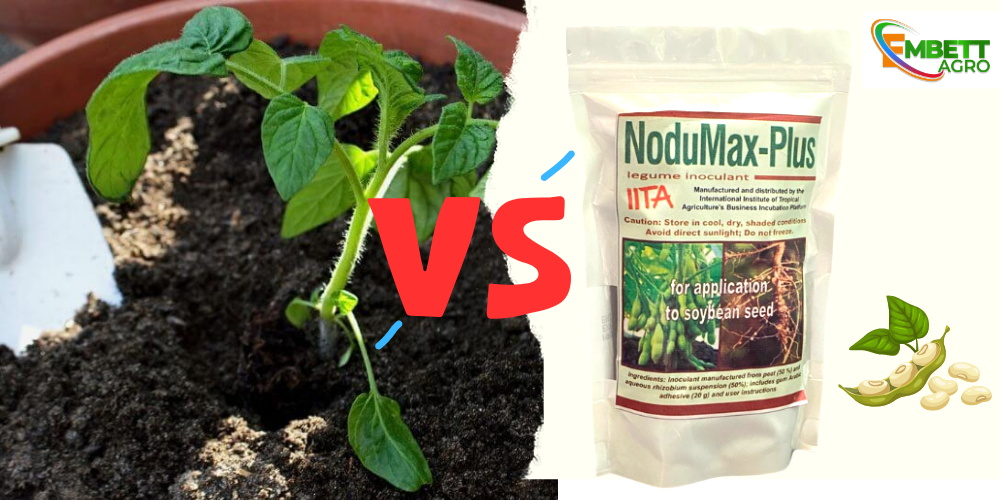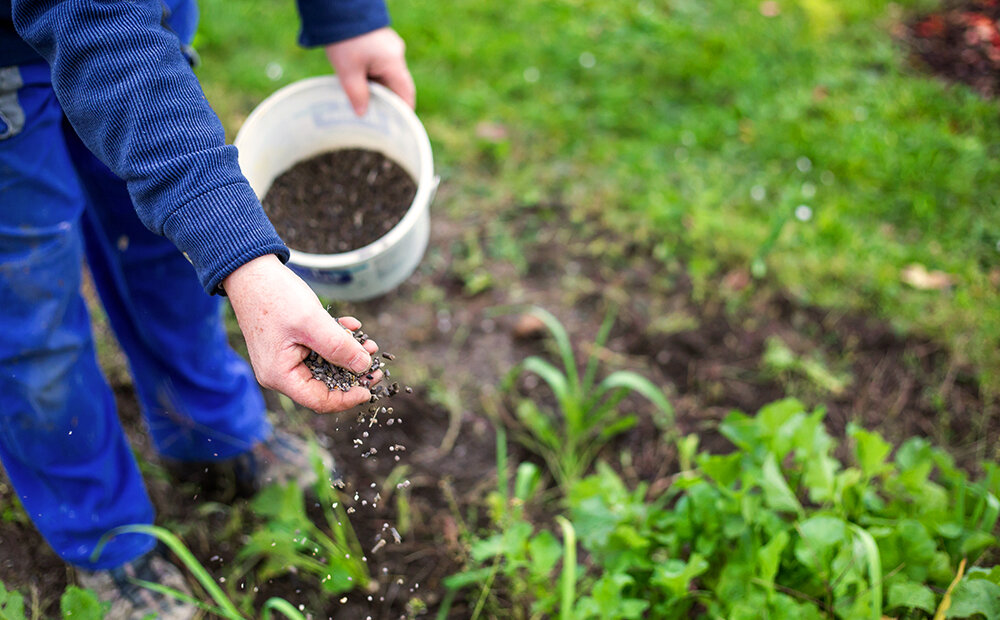Are you a soybean farmer looking to optimize your crop yield? One important decision you’ll face is whether to use soybean inoculants or stick with traditional fertilizers. Both options offer their advantages and considerations. In this article, we will explore the benefits and drawbacks of soybean inoculants and traditional fertilizers to help you make an informed choice for your soybean cultivation.
As soybean farmers strive to achieve higher yields and promote sustainable practices, the choice between soybean inoculants and traditional fertilizers becomes increasingly important. While traditional fertilizers have been used for decades, soybean inoculants offer a natural and environmentally friendly alternative. In this article, we will delve into the key aspects of both options, helping you determine which approach aligns best with your farming goals.

2. Understanding Soybean Inoculants
What are Soybean Inoculants?
Soybean inoculants are natural formulations that contain beneficial bacteria known as rhizobia. These bacteria have a symbiotic relationship with soybean plants, helping them fix nitrogen from the atmosphere and convert it into a usable form. By applying soybean inoculants to the seeds or soil, farmers can enhance nitrogen availability and promote healthier plant growth.
Benefits of Soybean Inoculants
Soybean inoculants offer several advantages:
- Increased Nitrogen Fixation: The rhizobia bacteria in soybean inoculants improve nitrogen fixation, reducing the need for synthetic nitrogen fertilizers.
- Enhanced Crop Yield: By maximizing nitrogen availability, soybean inoculants contribute to improved crop yield and overall plant health.
- Environmental Sustainability: Using soybean inoculants reduces reliance on synthetic fertilizers, minimizing the environmental impact associated with their production and usage.
- Soil Health Improvement: The introduction of rhizobia bacteria through soybean inoculants enriches the soil by increasing organic matter and promoting beneficial microbial activity.
3. The Role of Traditional Fertilizers

What Are Traditional Fertilizers?
Traditional fertilizers typically consist of synthetic or chemical-based compounds that provide essential nutrients to plants. They are readily available in the market and have been widely used in agriculture for many years.
Advantages of Traditional Fertilizers
Traditional fertilizers offer the following advantages:
- Nutrient Control: Synthetic fertilizers provide precise control over nutrient ratios, allowing farmers to tailor the fertilizer composition to specific crop needs.
- Rapid Nutrient Availability: Traditional fertilizers release nutrients quickly, providing immediate nourishment to plants.
- Convenient Application: Traditional fertilizers are available in various forms, such as granules, liquids, or soluble powders, making them easy to apply.
4. Comparing Nutrient Availability

Nutrient Availability in Soybean Inoculants
Soybean inoculants primarily focus on improving nitrogen availability. The rhizobia bacteria form nodules on soybean roots, fixing atmospheric nitrogen and converting it into a form that the plants can utilize. This ensures a steady supply of nitrogen throughout the growing season.
Nutrient Availability in Traditional Fertilizers
Traditional fertilizers provide a broad spectrum of nutrients, including nitrogen, phosphorus, and potassium (NPK). These nutrients are readily available to plants upon application, ensuring rapid nourishment and addressing any deficiencies.
5. Environmental Impact
Environmental Impact of Soybean Inoculants
Soybean inoculants have a minimal environmental impact. They reduce the need for synthetic nitrogen fertilizers, which require energy-intensive manufacturing processes and contribute to greenhouse gas emissions. By relying on natural nitrogen fixation, soybean inoculants promote sustainability and reduce the carbon footprint of soybean cultivation.
Environmental Impact of Traditional Fertilizers
Traditional fertilizers, particularly synthetic ones, can have significant environmental implications. Their production involves energy-intensive processes and often contributes to water pollution and soil degradation. Improper application or excess use of traditional fertilizers can lead to nutrient runoff, negatively impacting water bodies and ecosystems.
6. Cost Considerations
Cost of Soybean Inoculants
Soybean inoculants are generally cost-effective in the long run. While their upfront cost may be slightly higher than traditional fertilizers, the reduced reliance on synthetic fertilizers can result in long-term savings. Moreover, soybean inoculants contribute to soil health improvement, potentially reducing the need for additional soil amendments.
Cost of Traditional Fertilizers
Traditional fertilizers are widely available and often more affordable than soybean inoculants. However, the long-term cost can be higher due to repeated purchases and the potential need for additional soil amendments to address nutrient imbalances caused by synthetic fertilizers.
7. Effectiveness in Nitrogen Fixation

Effectiveness of Soybean Inoculants in Nitrogen Fixation
Soybean inoculants are highly effective in nitrogen fixation due to the symbiotic relationship between soybean plants and rhizobia bacteria. They can significantly reduce or eliminate the need for additional nitrogen fertilization, enhancing overall crop health and yield.
Effectiveness of Traditional Fertilizers in Nitrogen Supply
Traditional fertilizers provide a direct supply of nitrogen to plants. While they are effective in addressing nitrogen deficiencies, repeated and excessive use can lead to nutrient imbalances and potential environmental issues.
8. Improving Soil Health
Impact of Soybean Inoculants on Soil Health
Soybean inoculants positively impact soil health by introducing beneficial rhizobia bacteria. These bacteria enhance organic matter content, improve soil structure, and foster microbial activity. The long-term use of soybean inoculants can contribute to sustainable farming practices and long-lasting soil fertility.
Impact of Traditional Fertilizers on Soil Health
Traditional fertilizers provide nutrients to plants but do not necessarily enhance soil health in the same way as soybean inoculants. Over time, excessive use of synthetic fertilizers can lead to nutrient imbalances, soil acidification, and decreased microbial activity, affecting long-term soil fertility.
9. Ease of Application
Application of Soybean Inoculants
Soybean inoculants are typically applied to the seeds before planting or directly to the soil. The application process is straightforward and can be easily integrated into existing seed treatment or planting practices. Check how Nodumax inoculants are applied here.

Application of Traditional Fertilizers
Traditional fertilizers come in various forms, including granules, liquids, or soluble powders. Their application requires specialized equipment or techniques, depending on the fertilizer type. However, farmers are generally familiar with traditional fertilizer application methods.
10. Compatibility with Other Farming Practices
Compatibility of Soybean Inoculants with Other Farming Practices
Soybean inoculants are compatible with various farming practices, including conservation tillage, crop rotation, and integrated pest management. They can be seamlessly integrated into existing soybean cultivation systems without major adjustments.
Compatibility of Traditional Fertilizers with Other Farming Practices
Traditional fertilizers are compatible with most farming practices. However, their application may need to be adjusted based on factors such as soil type, crop type, and nutrient requirements.
11. Impact on Crop Quality

Impact of Soybean Inoculants on Crop Quality
Soybean inoculants contribute to improved crop quality by enhancing nitrogen availability and promoting healthier plant growth. This can result in higher yields, better seed quality, and increased overall crop value.
Impact of Traditional Fertilizers on Crop Quality
Traditional fertilizers can improve crop quality by addressing nutrient deficiencies. However, excessive use or imbalanced nutrient ratios can have negative effects on crop quality, such as reduced seed quality or increased susceptibility to diseases.
12. Long-Term Effects
Long-Term Effects of Soybean Inoculants
Long-term use of soybean inoculants can lead to improved soil health, reduced dependency on synthetic fertilizers, and sustainable farming practices. The introduction of beneficial rhizobia bacteria can have lasting positive effects on soil fertility and overall crop productivity.
Long-Term Effects of Traditional Fertilizers
Long-term use of traditional fertilizers can result in nutrient imbalances, soil degradation, and potential environmental damage. However, with proper management practices and soil testing, the negative effects can be minimized.
In the debate between soybean inoculants and traditional fertilizers, there is no definitive answer as to which is better. Both options offer their own set of advantages and considerations. Soybean inoculants provide a natural and sustainable approach to nitrogen fixation, promoting soil health and reducing environmental impact. Traditional fertilizers offer precise nutrient control and immediate availability, allowing farmers to address specific crop needs effectively.


Leave A Comment